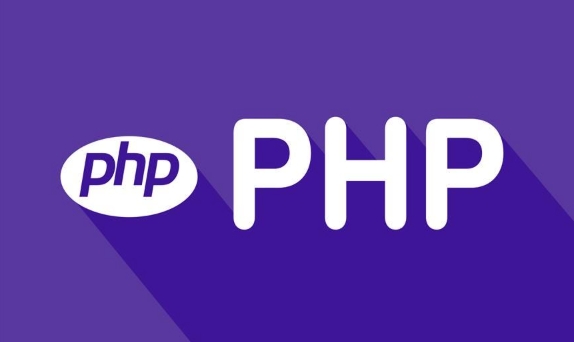 Backend Development
Backend Development
 PHP Tutorial
PHP Tutorial
 What are common PHP Security vulnerabilities and prevention methods?
What are common PHP Security vulnerabilities and prevention methods?
What are common PHP Security vulnerabilities and prevention methods?
Jul 08, 2025 am 01:34 AMPHP security vulnerabilities mainly include SQL injection, XSS, CSRF, and file upload vulnerabilities. 1. SQL injection tampers with database queries through malicious input. Prevention methods include using preprocessing statements, filtering inputs, and restricting database permissions. 2. XSS attacks harm user data by injecting malicious scripts. They should use htmlspecialchars to escape output, set CSP headers, and filter rich text content. 3. CSRF uses user identity to forge requests, preventive measures include using one-time tokens, verifying the Referer header, and setting the SameSite attribute of the cookie. 4. File upload vulnerability may cause the server to execute malicious scripts. The policy is to rename files and limit suffixes, prohibit uploading directories from executing scripts, and not place the upload path in the web directory. Good coding habits such as input verification, output escaping and minimum permission principles can effectively improve security.

PHP is a widely used server-side scripting language, which is very common in web development. But because of its widespread use, it has also become a common target for attackers. If you don't pay attention to security issues, the website may be easily hacked, leaked, or even hung up.

Below are some common PHP security vulnerabilities and corresponding prevention methods, which are easy to ignore but are very critical during the development process.
1. SQL Injection
SQL injection is an attack method that manipulates database queries by maliciously constructing input parameters. For example, when a user logs in, an attacker can enter something like ' OR '1'='1 in the user name or password box to bypass the verification logic.

How to prevent:
- Use prepared statements and parameterized queries such as PDO or MySQLi.
- Do not splice SQL query strings.
- Filter and verify user input, and use the whitelisting mechanism if necessary.
- Limit database account permissions and avoid using high-permission accounts to connect to the database.
For example, use PDO to execute a query:

$stmt = $pdo->prepare('SELECT * FROM users WHERE id = ?'); $stmt->execute([$userId]);
This way, even if $userId is tampered with, it will not affect the original SQL structure.
2. XSS (cross-site scripting attack)
XSS refers to an attacker injecting a malicious script into a web page. When other users browse the page, the script will be executed in their browser, thereby stealing cookies, session information, etc.
Common scenarios:
- Embed the
<script>tag in user comments - The content submitted by the form is not escaped and displayed directly
Prevention method:
- Use the
htmlspecialchars()function to escape special characters before output to the HTML page. - Set the appropriate Content-Security-Policy (CSP) header to limit script loading sources.
- Strictly filter content in rich text editors (such as using the HTML Purifier library).
For example, when outputting the user's nickname:
echo '<div>' . htmlspecialchars($userNickname, ENT_QUOTES, 'UTF-8') . '</div>';
3. CSRF (cross-site request forgery)
CSRF attack refers to an attacker inducing a user to click on a link or access a page, thereby sending requests without the user's consent in the user's name, such as modifying passwords, transferring money, etc.
Precautionary advice:
- Use one-time tokens (such as CSRF tokens) in sensitive operations and verify their origin.
- Checking the HTTP Referer header, although it is not 100% reliable, it can add a layer of protection.
- Use the SameSite Cookie attribute to prevent cross-site requests from carrying cookies.
The basic process of token verification:
- A random token is generated when the page is loaded and saved in the Session.
- Bring this token when submitting the form.
- The backend compares whether the submitted Token and Session are consistent.
4. File upload vulnerability
Many websites allow users to upload images or other files, but if handled improperly, an attacker may upload malicious scripts (such as .php files) and execute them on the server.
FAQ:
- Directly use the file name uploaded by the user
- No file type checked
- Upload directory executable scripts
Coping strategies:
- Rename the upload file, using the random string whitelist suffix.
- Strictly limit the file types that are allowed to be uploaded (such as only jpg/png is allowed).
- Set the upload directory to non-executable scripts (such as
.htaccessin Apache prohibits PHP execution). - The storage path should not be placed in a web-accessible directory, but can be read through scripts.
Basically that's it. PHP security involves many points, but as long as you develop good coding habits, many problems can be avoided in advance. Practices like input verification, output escaping, and the minimum permission principle, although seemingly simple, are very important in actual projects.
The above is the detailed content of What are common PHP Security vulnerabilities and prevention methods?. For more information, please follow other related articles on the PHP Chinese website!

Hot AI Tools

Undress AI Tool
Undress images for free

Undresser.AI Undress
AI-powered app for creating realistic nude photos

AI Clothes Remover
Online AI tool for removing clothes from photos.

Clothoff.io
AI clothes remover

Video Face Swap
Swap faces in any video effortlessly with our completely free AI face swap tool!

Hot Article

Hot Tools

Notepad++7.3.1
Easy-to-use and free code editor

SublimeText3 Chinese version
Chinese version, very easy to use

Zend Studio 13.0.1
Powerful PHP integrated development environment

Dreamweaver CS6
Visual web development tools

SublimeText3 Mac version
God-level code editing software (SublimeText3)

Hot Topics
 What are some best practices for versioning a PHP-based API?
Jun 14, 2025 am 12:27 AM
What are some best practices for versioning a PHP-based API?
Jun 14, 2025 am 12:27 AM
ToversionaPHP-basedAPIeffectively,useURL-basedversioningforclarityandeaseofrouting,separateversionedcodetoavoidconflicts,deprecateoldversionswithclearcommunication,andconsidercustomheadersonlywhennecessary.StartbyplacingtheversionintheURL(e.g.,/api/v
 How do I implement authentication and authorization in PHP?
Jun 20, 2025 am 01:03 AM
How do I implement authentication and authorization in PHP?
Jun 20, 2025 am 01:03 AM
TosecurelyhandleauthenticationandauthorizationinPHP,followthesesteps:1.Alwayshashpasswordswithpassword_hash()andverifyusingpassword_verify(),usepreparedstatementstopreventSQLinjection,andstoreuserdatain$_SESSIONafterlogin.2.Implementrole-basedaccessc
 What are the differences between procedural and object-oriented programming paradigms in PHP?
Jun 14, 2025 am 12:25 AM
What are the differences between procedural and object-oriented programming paradigms in PHP?
Jun 14, 2025 am 12:25 AM
Proceduralandobject-orientedprogramming(OOP)inPHPdiffersignificantlyinstructure,reusability,anddatahandling.1.Proceduralprogrammingusesfunctionsorganizedsequentially,suitableforsmallscripts.2.OOPorganizescodeintoclassesandobjects,modelingreal-worlden
 What are weak references (WeakMap) in PHP, and when might they be useful?
Jun 14, 2025 am 12:25 AM
What are weak references (WeakMap) in PHP, and when might they be useful?
Jun 14, 2025 am 12:25 AM
PHPdoesnothaveabuilt-inWeakMapbutoffersWeakReferenceforsimilarfunctionality.1.WeakReferenceallowsholdingreferenceswithoutpreventinggarbagecollection.2.Itisusefulforcaching,eventlisteners,andmetadatawithoutaffectingobjectlifecycles.3.YoucansimulateaWe
 How can you handle file uploads securely in PHP?
Jun 19, 2025 am 01:05 AM
How can you handle file uploads securely in PHP?
Jun 19, 2025 am 01:05 AM
To safely handle file uploads in PHP, the core is to verify file types, rename files, and restrict permissions. 1. Use finfo_file() to check the real MIME type, and only specific types such as image/jpeg are allowed; 2. Use uniqid() to generate random file names and store them in non-Web root directory; 3. Limit file size through php.ini and HTML forms, and set directory permissions to 0755; 4. Use ClamAV to scan malware to enhance security. These steps effectively prevent security vulnerabilities and ensure that the file upload process is safe and reliable.
 How can you interact with NoSQL databases (e.g., MongoDB, Redis) from PHP?
Jun 19, 2025 am 01:07 AM
How can you interact with NoSQL databases (e.g., MongoDB, Redis) from PHP?
Jun 19, 2025 am 01:07 AM
Yes, PHP can interact with NoSQL databases like MongoDB and Redis through specific extensions or libraries. First, use the MongoDBPHP driver (installed through PECL or Composer) to create client instances and operate databases and collections, supporting insertion, query, aggregation and other operations; second, use the Predis library or phpredis extension to connect to Redis, perform key-value settings and acquisitions, and recommend phpredis for high-performance scenarios, while Predis is convenient for rapid deployment; both are suitable for production environments and are well-documented.
 What are the differences between == (loose comparison) and === (strict comparison) in PHP?
Jun 19, 2025 am 01:07 AM
What are the differences between == (loose comparison) and === (strict comparison) in PHP?
Jun 19, 2025 am 01:07 AM
In PHP, the main difference between == and == is the strictness of type checking. ==Type conversion will be performed before comparison, for example, 5=="5" returns true, and ===Request that the value and type are the same before true will be returned, for example, 5==="5" returns false. In usage scenarios, === is more secure and should be used first, and == is only used when type conversion is required.
 How do I perform arithmetic operations in PHP ( , -, *, /, %)?
Jun 19, 2025 pm 05:13 PM
How do I perform arithmetic operations in PHP ( , -, *, /, %)?
Jun 19, 2025 pm 05:13 PM
The methods of using basic mathematical operations in PHP are as follows: 1. Addition signs support integers and floating-point numbers, and can also be used for variables. String numbers will be automatically converted but not recommended to dependencies; 2. Subtraction signs use - signs, variables are the same, and type conversion is also applicable; 3. Multiplication signs use * signs, which are suitable for numbers and similar strings; 4. Division uses / signs, which need to avoid dividing by zero, and note that the result may be floating-point numbers; 5. Taking the modulus signs can be used to judge odd and even numbers, and when processing negative numbers, the remainder signs are consistent with the dividend. The key to using these operators correctly is to ensure that the data types are clear and the boundary situation is handled well.





